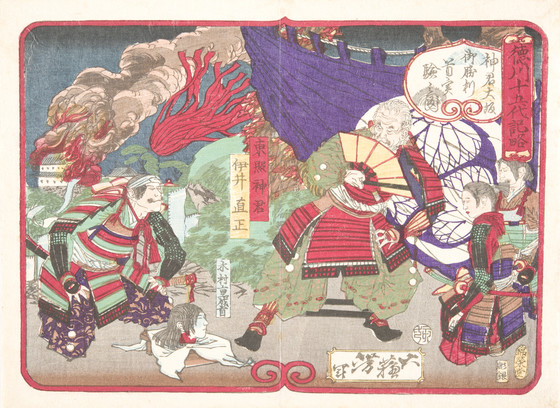Tokugawa Ieyasu Examining the Head of Kimura Shigenari at the Battle of Osaka Castle

Please log in to add this item to your gallery.
View comments
No comments have been posted yet.
Add a comment
Please log in to add comments.
Please log in to add tags.
* Nearly 20,000 images of artworks the museum believes to be in the public domain are available to download on this site.
Other images may be protected by copyright and other intellectual property rights.
By using any of these images you agree to LACMA's Terms of Use.
Tokugawa Ieyasu Examining the Head of Kimura Shigenari at the Battle of Osaka Castle
Alternate Title: Shinkun Ōsaka on shōri kubi jikken no zu
Series: A Brief Account of the Fifteen Generations of the Tokugawa Shoguns
Japan, 1875, JulyPrints; woodblocks
Color woodblock print
Image: 6 5/16 × 8 15/16 in. (16.03 × 22.7 cm)
Sheet: 7 × 9 1/2 in. (17.78 × 24.13 cm)
Herbert R. Cole Collection (M.84.31.330)
Not currently on public view


